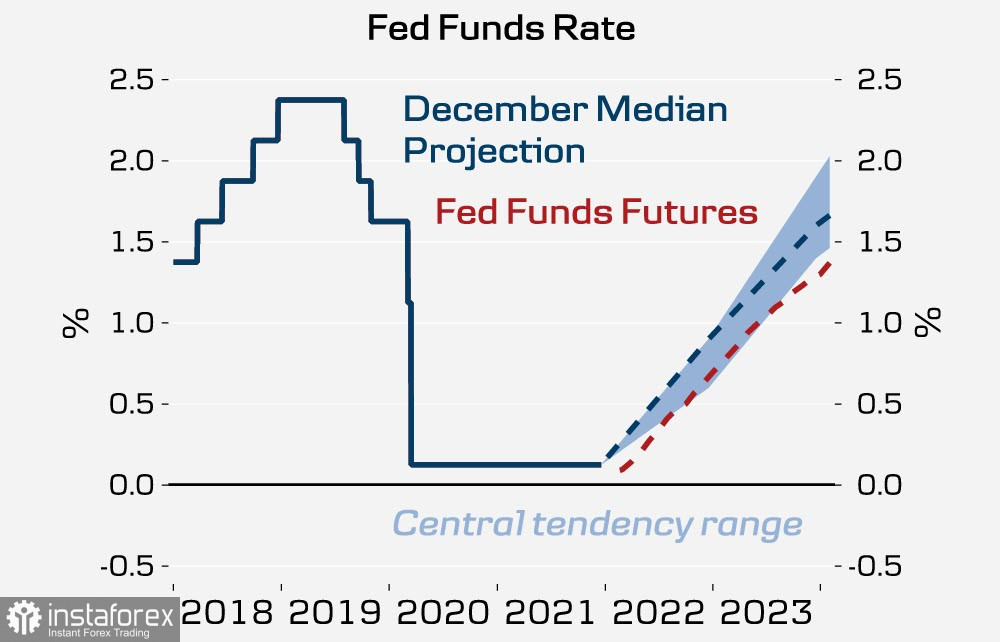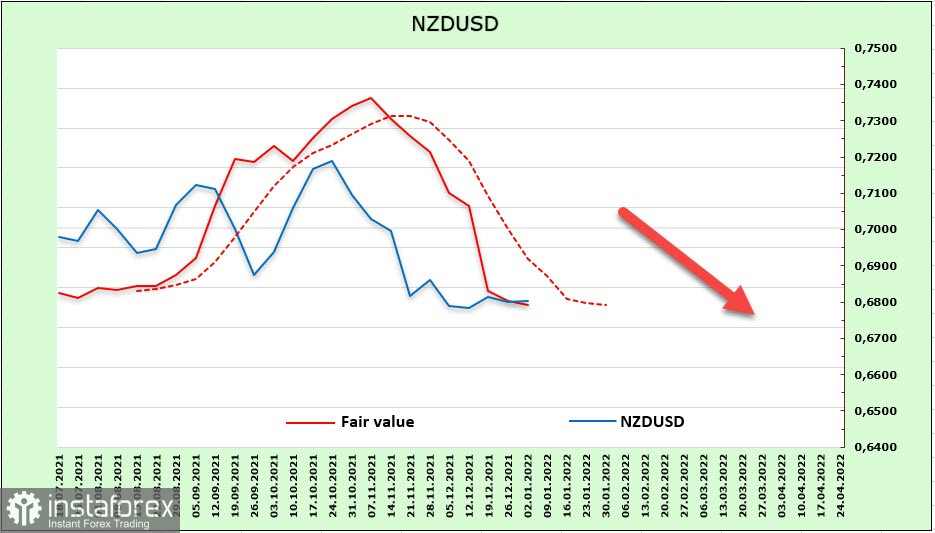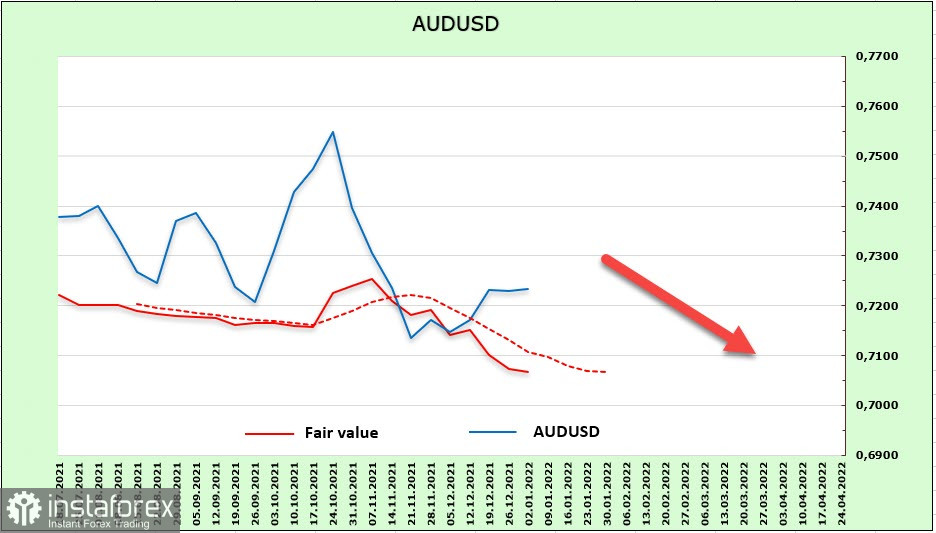The production ISM for December was slightly worse than November (58.7% against 61.1%), but in any case, the growth rate remains high. Separately, it is worth noting the growth of the employment index from 53.3% to 54.2%, which is an indirect indicator that the labor market report on Friday may turn out to be stronger than forecast.
A slight decrease in ISM is due to a slowdown in price growth, which is a good sign for the economy, but not for the US dollar. The markets are guided by the Fed's interest rate, and the Fed itself focuses primarily on inflation, and if inflation shows a tendency to slow down, then the Fed becomes less hawkish, and accordingly, the US dollar loses some of its support.
Almost immediately after the ISM report, the head of the Federal Reserve Bank of Minneapolis, Neel Kashkari, said that he expects two rate hikes this year. With regard to inflation, he believes that a return to low inflation is more likely than a "high inflation regime". In fact, he made a bearish statement and added pressure to the US dollar, since the dot chart assumes 3 increases, not two after the Fed's December meeting.

At the ministerial meeting, OPEC+ countries agreed to raise production in February by 400 thousand barrels. No surprises occurred in accordance with the previously adopted strategy. OPEC+ considered 3 basic scenarios for the development of the situation in 2022, and so far proceeds from the fact that no new risks have been added, and therefore there is no need to change the strategy. Brent oil has risen to $ 80 per barrel. Such oil growth is supported by a change in speculative positioning. The CFTC report shows changes in the mood of speculators in favor of more bullish expectations.
Today, it is necessary to pay attention to the reports of EIA and ADP. The first one will allow us to adjust forecasts for oil and demand for risk, and the second one will allow us to understand what to expect from Friday's Nonfarm data. We expect that the US dollar will go above the opening levels by the end of the day.
NZD/USD
The rate of the New Zealand dollar's growth (the maximum long position) was noted on the futures market in early November. There has been a sale of NZD for two months now, and three weeks ago, a cumulative short position was formed, which continues to increase. It seems that investors are completely disappointed in the New Zealand dollar and do not see prospects for the implementation of the hawkish intentions of the RBNZ. The estimated price is still below the long-term average and is directed downward.

The nearest target is to retest the support level of 0.6695, which represents a 38.2% pullback from 2020 growth, then 0.6630/40 (the lower limit of the bearish channel). The key target is 0.6450. The resumption of growth in the current conditions looks unlikely.
AUD/USD
Australia's economy is heavily dependent on China, which is experiencing a slowdown in growth. As a result, the export potential of Australia is under the threat of weakening demand, which puts some pressure on the weighted average exchange rate.
To resume the growth of the Australian dollar, a number of factors monitored by the RBA should show stronger growth than it is now. The labor market does not raise questions, as does industry, but inflation is not yet clear. Europe, the USA, Canada, the UK see inflation at the level of 5-7% either in the present or in the near future, but in Australia, it dropped to 3% in Q3. If inflation starts to grow after other currency zones, the Australian dollar will form a bullish trend, since the RBA will no longer restrain anything.
In the meantime, we can say that the AUD remains under pressure. There is no contraction in the short position in the futures market. The target price is below the long-term average and is still pointing down. Any attempts to rise are corrective.

There are low chances of going above the local high of 0.7280. The decline is more likely to continue and the target is the lower border of the 0.6890/6910 channel.





















